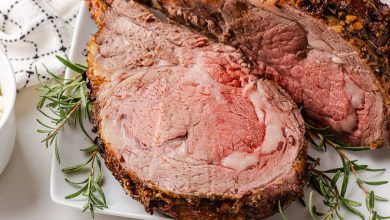Hoisin Sauce Nutritional Information & Ingredient Overview
Hoisin sauce is a popular condiment in Asian cuisine, known for its rich, sweet, and savory flavor. Often used in stir-fries, dipping sauces, and marinades, it adds depth and complexity to a variety of dishes. Below is a detailed breakdown of the nutritional content and health-related information for Hoisin sauce, perfect for those who are mindful of their dietary choices.
Nutritional Information (Per 100g)
| Nutrient | Amount |
|---|---|
| Energy | 220.0 kcal |
| Protein | 3.31 g |
| Total Fat | 3.39 g |
| Saturated Fat | 0.568 g |
| Carbohydrates | 44.08 g |
| Fiber | 2.8 g |
| Sugar | 27.26 g |
| Calcium | 32.0 mg |
| Iron | 1.01 mg |
| Magnesium | 24.0 mg |
| Phosphorus | 38.0 mg |
| Potassium | 119.0 mg |
| Sodium | 1615.0 mg |
| Zinc | 0.32 mg |
| Copper | 0.128 mcg |
| Manganese | 0.254 mg |
| Selenium | 1.8 mcg |
| Vitamin C | 0.4 mg |
| Thiamine (Vitamin B1) | 0.004 mg |
| Riboflavin (Vitamin B2) | 0.217 mg |
| Niacin (Vitamin B3) | 1.17 mg |
| Vitamin B6 | 0.062 mg |
| Folate | 23.0 mcg |
| Vitamin B12 | 0.0 mcg |
| Vitamin A | 0.0 mcg |
| Vitamin E | 0.28 mg |
| Vitamin D2 | 0.0 mcg |
Allergen Information
Hoisin sauce typically contains soybeans (in the form of soy sauce) and wheat (from the inclusion of flour or starch), making it unsuitable for individuals with soy or gluten sensitivities. The sauce may also contain sesame, depending on the brand, so it’s crucial to check the ingredients list for potential allergens.
Dietary Preferences
- Vegetarian: Hoisin sauce is typically plant-based, though it’s important to verify specific ingredients in different brands to ensure they are free of animal-derived products.
- Vegan: Most Hoisin sauces are vegan-friendly, but some variations may contain honey or other non-vegan ingredients.
- Gluten-Free: Hoisin sauce is not naturally gluten-free, as it may contain wheat-based ingredients. Gluten-free options are available, so always opt for certified gluten-free brands if necessary.
- Low-Sodium: Given the high sodium content in Hoisin sauce, it may not be suitable for those on a low-sodium diet. It’s best to use sparingly or look for low-sodium alternatives if reducing sodium intake is a priority.
Advice for Use
Hoisin sauce can be used in a variety of ways to elevate your dishes. It’s commonly found in stir-fry sauces, dipping sauces for dumplings and spring rolls, and as a marinade for meats, particularly in Chinese barbecue dishes. However, due to its high sugar and sodium content, it’s important to use Hoisin sauce in moderation, especially for those watching their sugar intake or on a low-sodium diet.
Conclusion
While Hoisin sauce is a flavorful and versatile condiment that can bring a sweet-savory balance to many dishes, it should be used thoughtfully in your recipes. With its rich nutritional profile, which includes a mix of protein, carbohydrates, and essential minerals, Hoisin sauce can be a beneficial addition to your culinary repertoire, provided you keep in mind its high sugar and sodium levels. Always check the ingredient list for potential allergens to ensure it fits your dietary needs.










